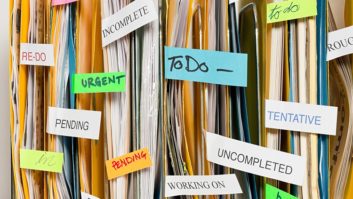ALEXANDRIA, Va.�Bynow, readers who are involved with the Emergency Alert System in the United States are well aware of the pending national test and what they must do during and immediately after it.
But here�s a look at what you will see when you go to file the required Forms Two and Three in the FCC�s ETRS system.�
The images at the bottom of this page are from a presentation given by FCC attorney advisor Austin Randazzo and FEMA IPAWS National Test Technical Lead Al Kenyon at last week�s Radio Show. The first four slides show how you�ll navigate to Form Two in the ETRS after the test; the fifth slide is the actual Form Two, a single page with two buttons to fill out no later than midnight Eastern time on Wednesday. Several images after that show you what the longer Form Three looks like; it is due Nov. 14.�
Also, the Federal Emergency Management Agency and the Federal Communications Commission have issued an overview and reminder about this week�s mandatory nationwide test of the Emergency Alert System.
Among the key points:
- It takes place Wednesday, Sept. 28, at 2:20 p.m. EDT.�
- Wireless Emergency Alerts on mobile phones will not be part of the test.
- This week�s test could be postponed in the event of widespread severe weather or other significant events. The back-up date is Oct. 5.�
Navigating to Forms Two and Three:
�
- Its purpose is to ensure that EAS remains an effective means of warning the public about emergencies.�
- It will be administered by FEMA, in cooperation with the FCC and National Weather Service, with the participation of radio, broadcast TV, cable, satellite and other service providers. These �EAS Participants� must file reports after the test to help FEMA determine how things went.
- The test message will be similar to the regular monthly EAS test messages; the public should receive audio and on-screen text conveying, �This is a national test of the Emergency Alert System. This is only a test.��
- The message will last about a minute. It will be sent in both English and Spanish, with stations and other participants deciding which to use for their communities.�
�

��
�
�

�
�
�
�

�
�
�
�

�
�
�
�

�
�
�
�
�

�
This story originally appeared on Radio’s sister publication,�Radio World.�







